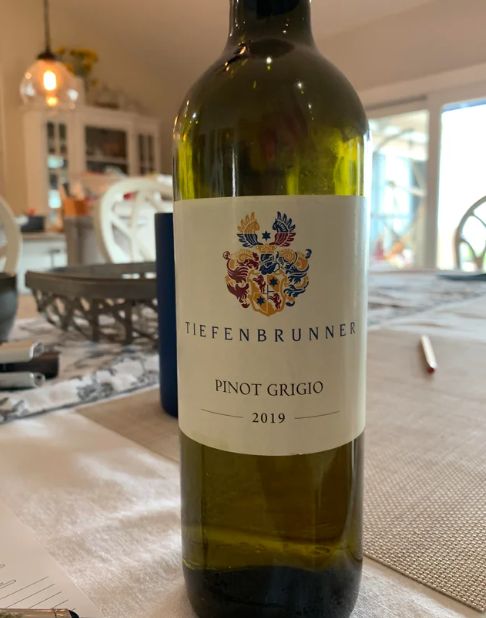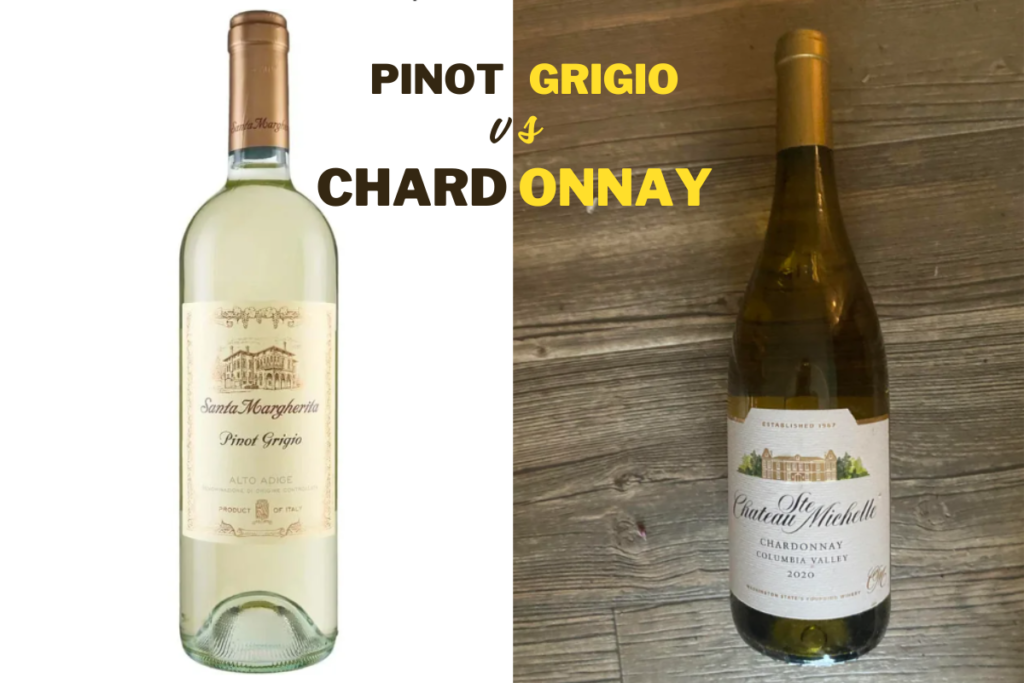Pinot Grigio vs Chardonnay: A Detailed Comparison
Lasagna dinner nights call for great white wines to go with it. Some of the best white wines to pair with any light and creamy pasta dishes and seafood includes Pinot Grigio and Chardonnay. But that is not all that they’re best paired with. Pinot Grigio and Chardonnay are among the world’s most popular white wine varieties. Both offer a number of styles, from light and crisp to full-bodied and oaky. This is based on factors such as terroir, production methods, and winemaker intent.
Well, don’t get confused with which wine to have today. We’ve got you. In this article, we will have a detailed comparison of Pinot Grigio vs Chardonnay.
Let’s dive right in starting with the basics.
All about Pinot Grigio
Recently, Pinot Grigio got popular as a food-friendly white. The vast majority of Pinot Grigio comes from Northern Italy. This is mostly because of the cool continental climate which is great for bright acidity and delicate floral aromas.
Some of the top regions where the Italian Pinto Grigio is made includes, Veneto, Friuli-Venezia Giulia, Trentino-Alto Adige, and Lombardy. Alto Adige Pinot Grigios grown along steep terraced vineyards tend to be more full-bodied with complex hazelnut and ginger notes.
The palate is light-bodied and crisp with mouth-watering acidity, tasting of lemons, limes, green apples, white nectarines and delicate white flowers or honeysuckle. This wine pairs perfectly with vegetarian dishes, sauced pastas and fresh seafood. Pinot Grigio reaches its peak drinking window within 1-2 years of vintage.
Also Read: Pinot Grigio vs Pinot Noir: The Ultimate Comparisons
All about Chardonnay
What makes Chardonnay so popular is that it is one of the most widely planted grapes in the world. This is because Chardonnay adapts well to a variety of climates from cool-climate chablis to sunny Napa Valley giving a broad spectrum of wine styles.
Some of the French icon regions include Chablis and White Burgundy where steely, high-acid wines have dominated for centuries. On the other hand, the New World tends towards more opulent styles that integrate rick oak barrel influences with tropical fruit.
Chardonnay skins do not contain color pigments so the resulting wines are often light straw to golden. The ABV levels typically range from 13-15%. Chardonnay grapes can produce white wines with a medium to full body. The wine can be crafted in styles from razor-sharp with pure citrus fruits to creamy with notes of crème brûlée, hazelnut, and baking spice waves riding a cushy texture.
Top wine regions for premium Chardonnay include Burgundy, Russian River Valley, Willamette Valley, and Margaret River.
Also Read: Is Pinot Grigio Sweet or Dry? – A Comprehensive Guide
Pinot Grigio vs Chardonnay: Key Differences
Over centuries, both Pinot Grigio and Chardonnay have evolved into globally appreciated white wines with very distinctive profiles.
Here are some of the major points of distinction:
Grape Appearance
- Pinot Grigio grape skins are a bluish-gray color.
- Chardonnay grape skins have a greenish-yellow pigmentation.
Body and Weight
Pinot Grigio is a delicate and crisp wine. The reason being that Pinot Grigio tends to be light-bodied to medium minus in body and palate weight.
Chardonnay has a medium to full body with a richer, rounder mouthfeel in the glass that provides more texture.
Acidity
- The naturally high acidity in Pinot Grigio gives a lively crispness and brightness.
- Chardonnay can have moderate to high acidity, which may be softened through malolactic fermentation depending on the winemaker’s intent.
Aromas
- Common aromas found in Pinot Grigio include white floral notes, green apple and lemon/lime citrus zest.
- Chardonnay can have fragrant tree fruit tones of peach, pear and apple along with traces of lemon curd and, if barrel-fermented, sensations of warm brioche and baking spice.
Flavor Profiles
Pinot Grigio flavors tend to center around citrus fruits like lemon and lime along with biting green apple and austere mineral aspects.
Oaked Chardonnay develops richer tropical fruit flavors of pineapple and papaya plus sweet baking spices, toasted oak, and vanilla. By contrast, unoaked Chardonnay emphasizes the grape’s bright lemon, white nectarine and lime blossom flavors.
Also Read: Riesling vs. Pinot Grigio: A Detailed Comparison
Aging Potential
As mentioned before, Pinot Grigio reaches its peak drinking window within the first 1-2 years following vintage. Premium Chardonnay aged in oak has the potential to evolve positively 5 years or well beyond a decade.
So basically, Pinot Grigio is typically meant to be drunk young and fresh. However, Chardonnay, especially some styles, particularly oaked wines from prestigious regions, can age well for years.
Production Styles
Pinot Grigio can be made in Ramato (“copper”) style with skin contact, resulting in a pink hue and fuller body.
Chardonnay can be fermented and aged in stainless steel, oak barrels, or a combination, influencing flavor and complexity.
Global Popularity
Pinot Grigio is particularly popular in the US and Italy, often seen as an easy-drinking option. However, Chardonnay is arguably the most popular white wine grape globally, with diverse styles appreciated for their complexity and food pairing versatility.
Classic Food Pairings
- Pinot Grigio: Shellfish, lemon chicken piccata, pesto linguine, vegetarian mushroom risotto
- Oaked Chardonnay: Lobster Thermidor, wagyu beef tenderloin, chanterelle mushroom ravioli
- Unoaked Chardonnay: Goat cheese tart, roast chicken with thyme, citrus salad
Ideal Serving Temperatures
- Pinot Grigio: 45°-50°F
- Chardonnay: 50°-55°F
Also Read: Pinot Grigio vs Sauvignon Blanc: Tasting the Difference
Conclusion
Pinot Grigio and Chardonnay are two very popular white wine grapes. They make quite different styles of wine. Pinot Grigio focuses on being refreshing, crisp, and easy to drink. It has bright citrus and apple flavors. This makes it very food-friendly.
Chardonnay can vary a lot. Some styles are elegant and delicate. Others are rich and opulent with oak and tropical fruit flavors. Many fall somewhere in between. Understanding what makes each one unique lets you pick the best option for any meal or occasion. Exploring all the types can be fun!
Both grapes make fantastic white wines. Just know whether you want refreshing or luxurious. And give different regions and winemakers a try to find your perfect glass.







